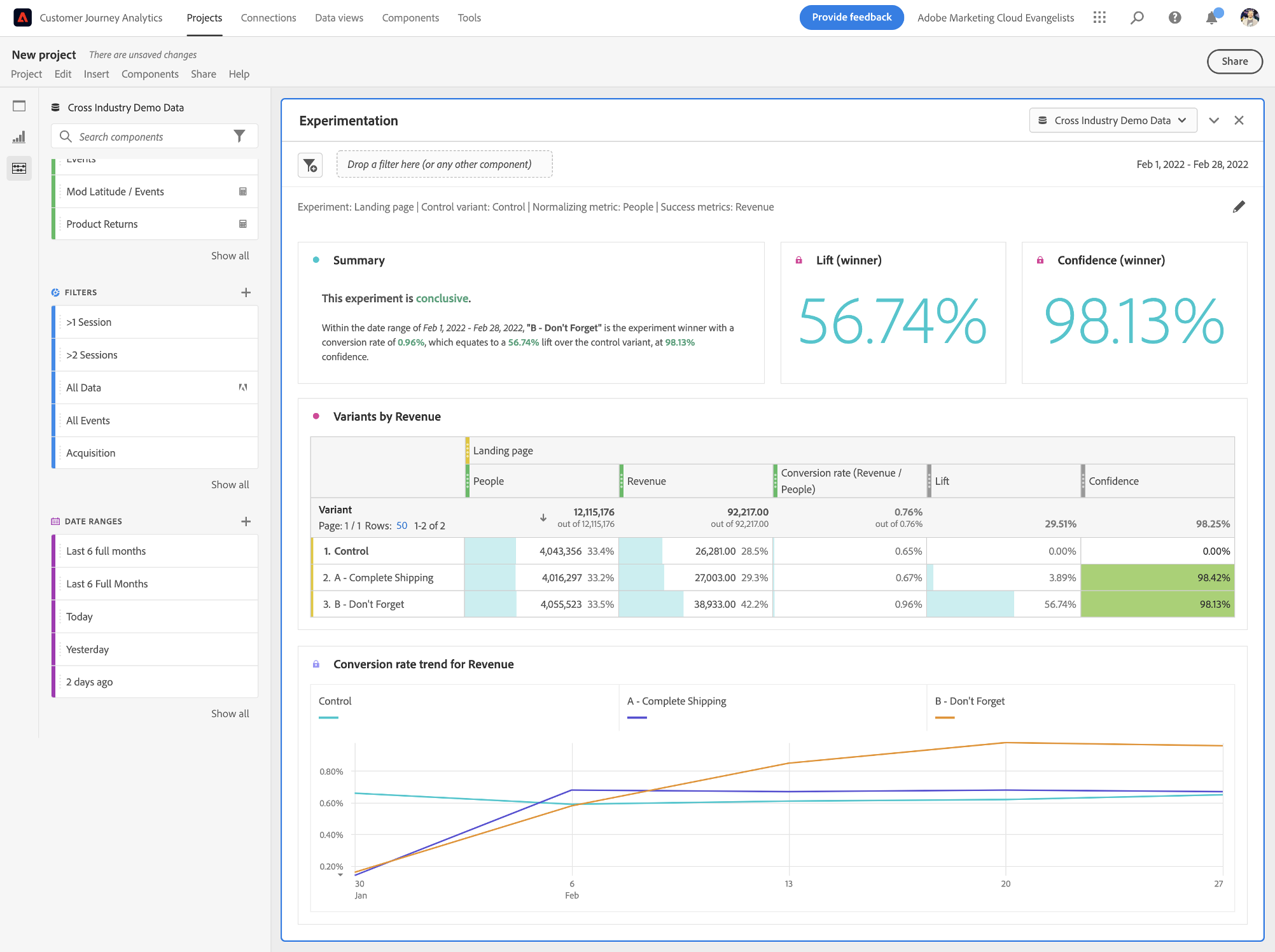Adobe today announced a number of new features for Customer Journey Analytics, its tool for tracking customers across platforms that is part of the company’s Experience Cloud portfolio.
As the pandemic sped up the move to online shopping for a lot of brands and their customers, the need for being able to manage and personalize the user experience across channels (think web, mobile, in-store, etc.) also increased. But it’s one thing to track all of this data and plot it on a dashboard — it’s another to make it actionable.
To help businesses better understand how even small changes can affect a customer’s overall journey across their various properties, Adobe today launched a new experimentation feature in Journey Analytics that allows them to test real-world scenarios and analyze their results. A company may want to see if a change in their mobile app reduces call center interactions, for example, or see if a change to their website leads to more downloads of their mobile app. It’s basically A/B testing with a focus on the overall customer journey, with the additional benefit that businesses can then use this data to precisely personalize the user experience for individual users or larger segments of users.
All of this is powered by machine learning models that make it easier to find these kinds of correlations across vast data sets. Adobe says this algorithm takes into account “historical data, comparable campaigns, ongoing benchmarks, and more.”
“Often, we’re seeing now people starting in digital — where they may not have before — but they’re still engaging in multiple channels through multiple devices for a singular outcome,” Nate Smith, director of Product Marketing for Adobe Analytics, told me. “Ultimately, this has driven up the priority of omni-channel analysis for a lot of brands with that focus on lifetime value and retention. What has been a problem is the way that that type of analysis is done.”
Smith argues that the traditional approach, with a data pipeline into a data warehouse or data lake, with a SQL layer and a visualization tool on top, is too cumbersome in an environment where stakeholders need quick answers to questions that are often seemingly simple but hard to put into code.
“With Customer Journey Analytics, our customer journey analytics platform, we have a lot of purpose-built components that are powered by our Experience Platform, which has been a complete native build over the last several years for all of our acquisitions in the space to then tie into natively,” Smith said. “You’ve seen a lot of other vendors make massive acquisitions to build out these marketing cloud portfolios and we’re the ones that have actually developed a platform to actually do that, because, at some point, you run out of duct tape and baling wire to make all this work.”
It’s this custom platform that then allows the team to feed data into the new experimentation feature. As Smith noted, this also means that developers can work with any of their existing tools to build these tests, too.
Adobe also built a new integration between Customer Journey Analytics’ ability to discover customer segments and its Customer Data Platform [CDP]. “You can actually share any audience that you discovered in Customer Journey Analytics to the CDP and then take action on that in any system,” Smith explained. “For us, this is a really exciting moment […] to see not just insight discovery but insight activation, ultimately.”

